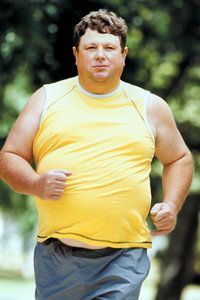On Oct. 21, 2025, a judge in Florida issued a groundbreaking decision in Complete Care v State Farm, 25-CA-1063. It concerns a fact pattern that many chiropractic doctors have faced wherein an insurer, such as State Farm or Allstate, decides to simply stop paying all claims submitted by a healthcare provider.
| Digital ExclusiveAerobic Exercise Programming for Patients With Metabolic Syndrome
Metabolic syndrome is a multifaceted condition that requires a multifaceted approach to treatment. The syndrome is made up of five conditions; hypertension, diabetes, hypercholesterolemia, hyperlipidemia and obesity. Individually, these conditions are significant health problems; together, their effect can be devastating.
Fortunately, there are commonalities among these conditions. This makes it possible for individual treatments to have an effect on more than one condition in the syndrome. One such treatment is exercise. Exercise aimed at weight loss and reducing obesity has a positive effect on diabetes, hypertension, hyperlipidemia and hypercholesterolemia. Each of these conditions is easier to control when body weight is reduced. This makes exercise one of the most important components of the treatment regimen for metabolic syndrome.
Most health care providers understand the benefits of exercise, and often suggest patients exercise and lose weight. However, minimal (if any) instructions are typically provided with this directive. In all fairness to the doctor giving the weight-loss directive, exercise programming is not a subject taught or emphasized in school. This means there is a gap to bridge for clinicians treating patients with metabolic syndrome.

A bridge for the gap is offered here through instruction in aerobic exercise programming. Aerobic training is the easiest type of exercise to begin, and has the greatest effect on weight loss and controlling obesity. Other fitness components, such as flexibility, strength training, etc., can be added in once an aerobic base has been established.
Pre-Participation
Regardless of the patient's physical status at the beginning of a program, a thorough physical examination is necessary. The examination should include heart, lung and blood pressure assessment. An ECG and general lab work should also be performed in order to clear the way for an aerobic conditioning plan.
Pulse rate, body weight and circumferential measurements of the neck, arms, waist, hips and thighs should also be recorded. The waist-to-hip ratio should be calculated from waist and hip measurements. (Table 1) These baseline numbers will serve as the reference for improvement throughout the program.
| Table 1: Calculating and Interpreting Waist-to-Hip Ratio Waistmeasurement: circumference of the body at the waist, measured midway between the lowestribs and the crest of the ilium in inches Hipmeasurement: circumference of the body at the widest point of the hips (greater trochanterarea) in inches Waist-to-hipratio: The waist measurement is then divided by the hip measurement. The resultingnumber for men should be less than .90; the resulting number for women shouldbe less than .80 |
When most people think of aerobic exercise, they picture aerobic dance classes. There are many other choices. Table 2 lists several types of aerobic exercise readily available to most patients.
Frequency / Rest
Some modes of aerobic exercise can be performed daily. Walking is the best example. It is low impact and requires minimal training or equipment. Other modes of exercise cannot be performed daily and require a lower frequency. Running is the best example. It is high impact and requires more training. Days of exercise must be mixed with days of rest.
Strenuous aerobic exercise can be performed every other day or in patterns, such as two days of exercise followed by a day of rest, or three days of exercise followed by a day of rest. Exercise can also be recommended as a number of sessions per week. The patient can be instructed to exercise at least five days a week, with the patient selecting the days that best fit their weekly schedule.
| Table 2:Modes of Aerobic Exercise Aerobicdance classes Cycling(road) Cycling(stationary) Dancing(multiple types) Ellipticaltrainers Hiking Jumpingrope Rowing(boat) Rowing(machine) Running(road) Running(treadmill) Skimachines Stairclimbing (actual stairs) Stairclimbing (step machine) Swimming Walking(outdoors) Walk/ run intervals Walking(the mall / track) Walking(treadmill) Wateraerobics |
Exercise frequency must also be planned beyond weekly sessions. The number of weeks the patient should exercise before the frequency and overall exercise program are reassessed must be considered from the start. Reassessment should occur in four- to 12-week intervals depending upon the patient's condition and goals. Patients who are just beginning a program or who are returning from an injury should be reassessed frequently (4-6 weeks). Patients who have been exercising for longer periods and are in better shape do not require reassessment as frequently (6-12 weeks).
Duration / Distance
The length of an exercise session can be measured in time or distance. Time is the most practical method. Walking 20 minutes sounds better than walking 1mile. This is more encouraging and seems more attainable to the patient, especially the novice exerciser.
Since schedules and daily activities are tracked by time, it is easier for patients to plan exercise based on time. This is especially important for patients who are not used to exercising. Patients know immediately how to plan for 30 minutes of exercise, but may not know initially how long it may take them to walk a mile or bike 5 miles.
Tracking time is also more practical when aerobic equipment does not have the capability to track distance, the tracking mechanism is broken or the mode of exercise does not result in measurable displacement (water aerobics, jumping rope).
Exercise Intensity
There are two simple rules for determining appropriate intensity. The rule for determining minimal intensity is that the patient must be sweating within the first 10 minutes of exercise. If the patient is not sweating at this point, the intensity is too low. The rule for determining maximal intensity is that the patient must be able to carry on a conversation while exercising. If the patient cannot converse readily, the intensity is too high.
| Table 3:Determining Maximum Heart Rate for Aerobic Exercise Determiningthe maximum heart rate for a 40-year-old male with a resting heart rate of 70and an exercise goal of weight reduction and fat burning is accomplished asfollows: Restingheart rate: 70 beats per minute (bpm) Maximumheart rate: Patient’s age subtracted from 220 (220-40) = 180 bpm Restingheart rate subtracted from maximum heart rate (180 – 70) = 110 Tofind the heart rate required to burn fat, multiply 100 x .70 (70 percent) =77 Thenumber based on the goal-percentage is then added to the resting heart rate:77 + 70 = 147 bpm Thus,the target heart rate during exercise for the patient in question is 147 bpm |
Once the above number is determined, the exercise goal can be considered. To burn fat, the number is usually multiplied by 60-70 percent. To build endurance and stamina, the number is usually multiplied by 80 percent. Then add the patient's resting heart rate to determine the final number. (Table 3)
Record-Keeping
The final step in aerobic exercise is to keep track of activity and progress. The patient should record the dates and duration of each exercise session. The record will later serve as a reminder to the patient of how far they have progressed, and it will help the doctor track patient compliance and progress.
While these suggestions are intended to help the doctor address metabolic syndrome through aerobic exercise, the method of exercise programming recommended here can apply to almost any patient. For a sample travel card to assist with exercise programming and record-keeping, visit my website, www.examdoc.com.
Resources
- Byrns CD, Wild SH. The Metabolic Syndrome and Primary Care. Wiley; Hoboken, NJ, 2007.
- American Council on Exercise. ACE Personal Trainer Manual, American Council on Exercise; San Diego, CA, 1997.
- Baechle TR, Earle RW. Essentials of Strength Training and Conditioning, 3rd Edition. National Strength and Conditioning Association; Lincoln, NE, 2008.
- Bryant CX, Franklin BA, Conviser JM. Exercise Testing and Program Design: A Fitness Professional's Handbook. Healthy Learning; Monterey, CA, 2002.



